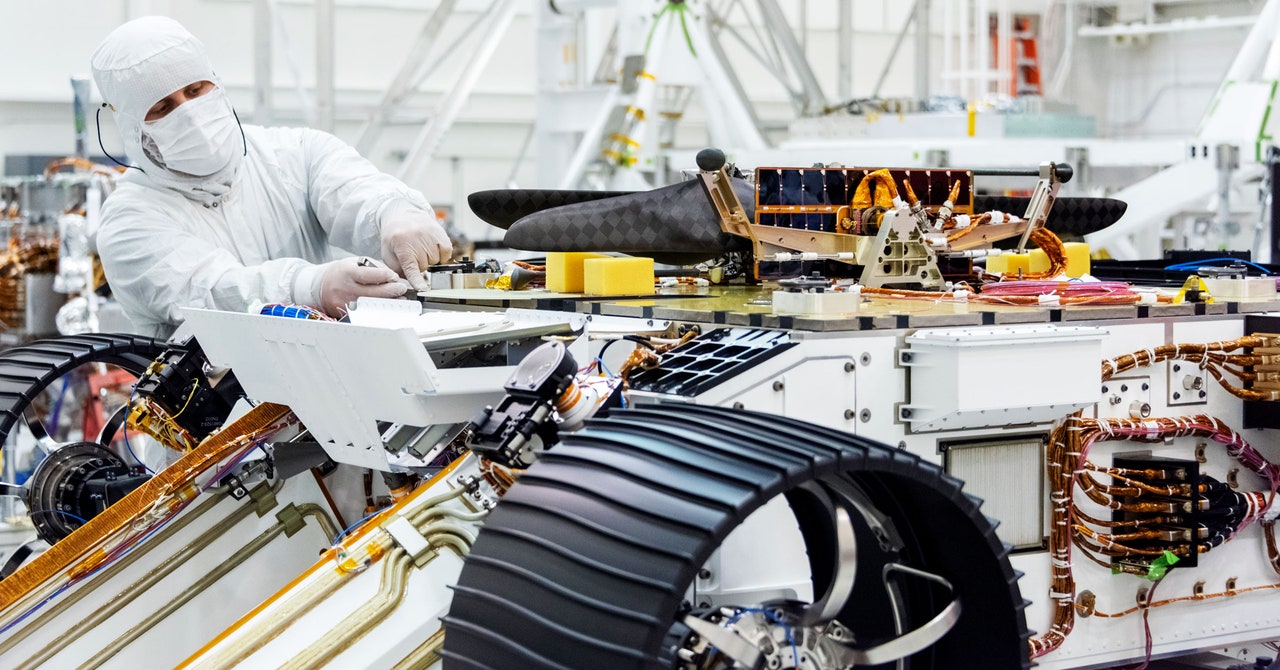Later this week, NASA plans to launch its fourth Mars rover, Perseverance, on a six-month journey to the Red Planet. Perseverance will boot up a mission to collect samples of Martian dirt that might have traces of ancient life, so that they can be returned to Earth by another mission later this decade. It will also carry a payload unlike anything that’s ever been boosted into space: a small autonomous helicopter called Ingenuity. Sometime next spring, probably in April, Ingenuity will spin up its rotor blades and become the first spacecraft to go airborne on Mars.
“I see it as kind of a Wright brothers moment on another planet,” says Bob Balaram, the chief engineer for the Mars helicopter project at NASA’s Jet Propulsion Laboratory. “It’s a high-risk, high-reward mission that could enable us to go to lots of places we haven’t been able to go before.”
Satellites are good at getting a global understanding of a planet, and the rovers are great at exploring a relatively small amount of terrain in minute detail. For everything in between, it helps to have an airborne system. A rover can only cover a few dozen kilometers over the course of several years, but future extraterrestrial drones could easily cover that in a day. They could take aerial snapshots to help a rover plot the best path or collect samples and return them to a stationary lander for analysis. Ingenuity won’t be able to do any actual science, but it’s the first step toward an extraterrestrial aircraft that can.
Ingenuity’s hardware—cameras, communications equipment, avionics—is stuffed in a small cube that will be suspended in the air by four spindly legs that make it look a bit like a robotic insect. Up top, there are two pairs of rotor blades, each four feet in diameter, sandwiched between Ingenuity’s body and a rectangular solar panel. The whole apparatus weighs less than a full two-liter soda bottle, but it’s hardy enough to withstand the extreme environments it will face during launch, landing, and its day-to-day existence on the Martian surface.
Once Perseverance arrives on Mars, it will spend a few weeks checking out its systems. If everything looks good, its first order of business will be to find a clearing in the rock-strewn Jezero crater to drop off its passenger. (And it will literally be dropped—the helicopter is attached to the belly of the rover.) Once the rover and the helicopter part ways, the chopper’s days are numbered. Balaram and his team will only have a month to conduct up to five test flights. “The whole intent of this campaign is to get engineering data so we can say this worked the way we thought and there were no surprises on Mars,” says Balaram. “Beyond 30 days, we’d just be a distraction.”
Like the Wright brothers’ famous flight test at Kitty Hawk, on its first flight Ingenuity will only be in the air for a few seconds. This hop will be a nearly exact replica of flight tests Balaram and his crew did back on Earth so they can make an apples-to-apples comparison of the helicopter’s performance against expectations. If everything goes well, Ingenuity will attempt increasingly challenging flight profiles. The helicopter is designed to fly up to 15 feet in the air and can travel up to three football fields from its takeoff point. Its

